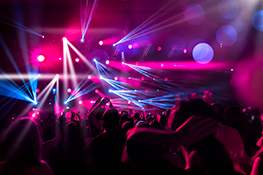The Art of Light and Shadow: Mastering Dramatic Stage Lighting Effects
Introduction: Unveiling the Power of Light on Stage
Stage lighting is more than just illuminating the actors; it’s a powerful storytelling tool capable of evoking emotions, setting the mood, and enhancing the dramatic impact of a performance. Mastering dramatic stage lighting effects requires understanding the interplay of light and shadow, color temperature, and the strategic placement of fixtures. This article delves into the techniques and principles behind creating captivating and impactful stage lighting designs.
Understanding the Fundamentals: Color, Intensity, and Direction
Before diving into complex effects, it’s crucial to understand the basic elements:
Color Temperature and its Emotional Impact
The color temperature of your lighting significantly influences the audience’s perception. Cool blues and greens often suggest serenity or melancholy, while warm oranges and reds evoke feelings of warmth, passion, or danger. Understanding how to use these variations effectively is paramount.
Intensity and its Role in Focus and Emphasis
Light intensity directly impacts the focus and emphasis on specific areas or actors. A spotlight highlighting a character’s face creates intimacy and draws the audience’s attention, while a wash of dimmer light can establish a sense of mystery or isolation.
Directional Lighting: Shaping Form and Mood
The direction of light shapes the actors’ appearance and the overall mood. Front lighting provides even illumination, side lighting adds depth and dimension, and backlighting creates silhouettes and separation. Experimenting with different angles can dramatically alter the scene’s aesthetic.
Advanced Techniques: Creating Dramatic Effects
Once you’ve grasped the fundamentals, you can move onto more sophisticated techniques:
Silhouetting: Creating Intrigue and Mystery
Backlighting can create striking silhouettes, shrouding figures in mystery and adding a layer of intrigue. This technique is particularly effective in suspenseful scenes or moments of revelation.
Gobos and Patterns: Adding Texture and Atmosphere
Gobos, or go-between objects, are metal templates placed in front of lighting instruments to project patterns or shapes onto the stage. These can transform a simple background into a richly textured environment, enhancing the overall atmosphere.
Color Mixing: Achieving Nuance and Subtly
Mixing colors on stage can create subtle shifts in mood and atmosphere. By blending colors precisely, you can achieve nuanced effects that enhance the storytelling without being overwhelming.
Special Effects: Fog, Lasers, and Moving Lights
Adding special effects like fog, lasers, or moving lights introduces another layer of visual storytelling. These tools can create stunning visual spectacles that amplify the emotional impact of the performance. Remember, however, to use them sparingly and with purpose; less is often more.
Practical Applications: Case Studies and Examples
Analyzing successful stage lighting designs offers valuable insights. Examining specific plays and musicals, noting the lighting choices and their impact on the narrative, provides practical examples of how to apply these techniques effectively.
Conclusion: The Ongoing Evolution of Stage Lighting
Stage lighting is a continuously evolving art form. By understanding the fundamental principles, experimenting with different techniques, and remaining aware of new technologies, you can constantly refine your skills and create breathtaking lighting designs that elevate the performance to new heights. The mastery of light and shadow is a journey, not a destination; embrace the creative process and let your imagination guide you.


 Auditorium Construction Services
Auditorium Construction Services 